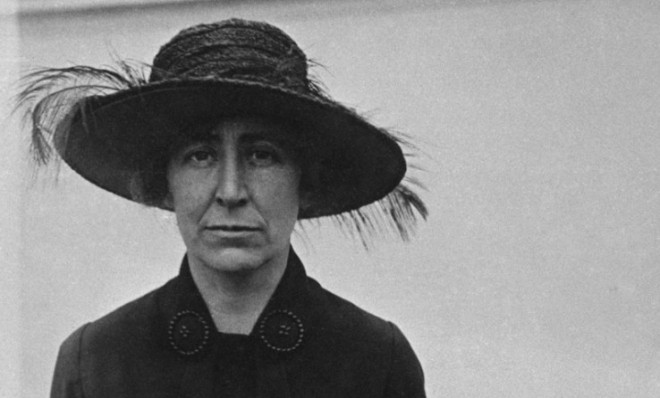A brief history of women in Congress
Women now hold a record 20 percent of Senate seats and more than 18 percent of the House. Why not more?

How long has Congress had female members?
Women have served in Congress since suffrage activist Jeannette Rankin of Montana won a seat in 1916 — four years before women won the right to vote. The feminist movement of the 1960s brought in a new wave of congresswomen, including Shirley Chisholm, the first African-American woman elected, and Bella Abzug, one of the first to advocate gay rights. "Shirley and Bella were not what the male members of Congress had come to expect from a female colleague," said former Rep. Catherine Dean May, who was first elected in 1959. "They got just as demanding and as noisy and as difficult as men did!" Still, women never made up much more than 2 or 3 percent of members until the watershed election of 1992, known as the Year of the Woman, when women's representation doubled.
What happened this year?
The Week
Escape your echo chamber. Get the facts behind the news, plus analysis from multiple perspectives.

Sign up for The Week's Free Newsletters
From our morning news briefing to a weekly Good News Newsletter, get the best of The Week delivered directly to your inbox.
From our morning news briefing to a weekly Good News Newsletter, get the best of The Week delivered directly to your inbox.
The number of women in the Senate increased from 17 to 20, and in the House from 78 to 80. New Hampshire became the first state to have an all-female congressional delegation. But the gains were limited to Democrats. In the Senate, Democrats grew from 12 women to 16, while Republicans dropped from five to four. In the House, Republican women dropped from 24 to 21. For various policy and sociological reasons, women are more active in the Democratic Party: 190 female Democrats ran for the House this year, compared with 109 Republicans. And the Democratic candidates tended to be better prepared, thanks to well-funded Democratic groups like Emily's List, Emerge, and Progressive Majority, which identify potential candidates and then prep them for the rigors of a campaign. The Republicans have fewer programs to groom female candidates. Still, even the Democrats remain far away from true gender parity. Women competed in fewer than one third of congressional races this year.
Why don't more women run?
It's partly a pipeline problem. Women make up just under 24 percent of members of state legislatures, a kind of farm system for national candidates. That percentage has been essentially flat for a decade. One reason more women don't run is the same reason there are so few women at the highest levels of corporations: Political jobs are so all-consuming that they leave little time for family — and the higher the office, the more time it consumes. Women tend not to run until after they have had children, by which time they face opponents with more experience. Incumbency is also a huge advantage in American politics, and most incumbents are men. Women's own attitudes about their abilities also hold them back. Studies show that women with the same qualifications as men rate themselves as unqualified for office — a kind of internalized sexism.
What else puts them off?
A free daily email with the biggest news stories of the day – and the best features from TheWeek.com
The national media coverage of women is clearly a discouraging factor. A survey of potential female candidates showed that the intense reactions to the candidacies of Hillary Clinton and Sarah Palin actually scared women off rather than inspiring them to run themselves; women of both parties said media coverage was too personal, too negative, and too focused on the women's looks. "It's still husbands and hemlines," says political scientist Barbara Palmer. On the House floor, women have had to struggle for equal treatment from their male peers. "The day I wore a pants suit onto the floor you'd have thought I asked for a land base for China," said Pat Schroeder, the first congresswoman from Colorado.
Do women do better in other countries?
Women generally make up more than 25 percent of lawmakers in Western European countries; in Sweden, they account for 45 percent. One reason for their stronger presence is that candidacies in Europe are generally allocated through party lists. Since many parties are committed to maintaining voluntary minimum percentages of women candidates, that process tempers the incumbency bias that skews U.S. contests. Other countries, such as India and Iraq, have mandated quotas for female legislators, but even some without quotas elect far more women than the U.S.: In Mozambique, for example, nearly 40 percent of legislators are women.
Do women legislate differently?
Studies show that regardless of party affiliation, female legislators are more likely than men to cite the needs of the poor, the sick, the elderly, and children as priorities. But other research suggests that it takes a critical mass of female lawmakers to significantly reshape policy. In decision-making bodies at all levels, from school boards to corporate boards and legislatures, women tend to be interrupted more often and challenged more aggressively than men, studies show; as a result, they tend to speak less and introduce fewer motions. Only when women make up more than half of the group does that dynamic change. That kind of change is still far off. "Don't take the success of this particular cycle for granted," says Sam Bennett of the Women's Campaign Fund. "This is the toughest country in the world for women to ascend in politics."
The real Year of the Woman
The breakthrough year for women in politics was 1992, thanks to Anita Hill — or rather, the male senators who grilled her. Hill was the lawyer who in 1991 accused Clarence Thomas of sexually harassing her while he was her supervisor. At the Senate hearings to confirm Thomas as a Supreme Court justice, a phalanx of male senators expressed sneering disbelief that sexual harassment existed at all, dismissing Hill's testimony that Thomas repeatedly propositioned her and made lewd remarks as the delusional rantings of a spurned woman. Women were infuriated — and motivated. One year later, more women tried for national office than ever before: 39 women ran for open seats, and 22 won. This year, 26 women ran in open-seat elections, and 14 won. "I really felt that we were paving the way for a huge number of women," said 1992 Senate candidate Jean Lloyd-Jones of Iowa. "But the promise of 1992 was never realized."
-
 Are Republicans going to do a deal on health care?
Are Republicans going to do a deal on health care?Today's Big Question Obamacare subsidies are expiring soon
-
 The powerful names in the Epstein emails
The powerful names in the Epstein emailsIn Depth People from a former Harvard president to a noted linguist were mentioned
-
 May your loved ones eat, drink and be merry with these 9 edible Christmas gifts
May your loved ones eat, drink and be merry with these 9 edible Christmas giftsThe Week Recommends Let them eat babka (and cheese and licorice)